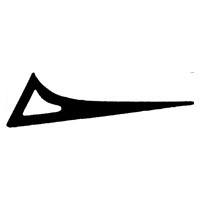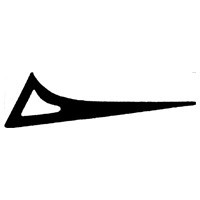Indirect assessment of the derivative trademark by the INDECOPI Court

Published byErnesto Barzola

The concept of derivative trademark is not regulated either by the national or the Andean regulations; however, it is usually cited both in doctrine and in the legal practice. In fact, the Andean Court has repeatedly declared that, although the concept of derivative trademark is not established by Decision 486, it recognizes the importance thereof in our governing rules.
In that respect, the Andean Court has defined the derivative trademarks as “(…) those distinctive signs applied for registration by the owner of a previously registered trademark, in relation to the same goods or services, in which the preponderant distinctive feature is the main trademark with non-substantial variations of the sign itself or with respect to the accessory elements accompanying the trademark” (Proceeding 460-IP-2019).
By virtue of the aforementioned, the Court likewise affirms that the denial of the new application (derivative trademark) only could be based on “(…) the added accidental or complementary elements and not on the main distinctive feature, since the latter has been previously registered and therefore, it remains outside any discussion” (Id.). However, in an apparent contradiction, the Court itself mentions that “(…) the application for registration of a sign derived from a trademark previously registered does not grant its owner the inevitable right to obtain the applied-for registration, since every new application for trademark registration is subject to the registrability analysis which must be carried out by the competent authority” (Id.).
In that sense, it seems that the Court Specialized in Intellectual Property of INDECOPI nourishes from said apparent contradiction when issuing Resolution No. 321-2020/TPI-INDECOPI, in which it suspends, by majority vote of three Court members, the proceeding of application for registration prosecuted under Serial No. 801384-2019. Said proceeding relates to the registration of the mark (red colored) petitioned by Convert Footwear Corp. E.I.R.L. in class 25, which was opposed by Nike Innovate C.V. on the basis that the applied-for mark was mistakable for its registered trademarks which include the famous SWOOSH design (
(red colored) petitioned by Convert Footwear Corp. E.I.R.L. in class 25, which was opposed by Nike Innovate C.V. on the basis that the applied-for mark was mistakable for its registered trademarks which include the famous SWOOSH design ( ) , as well as an imitation of the previously mentioned notorious sign.
) , as well as an imitation of the previously mentioned notorious sign.
During the proceeding in the First Instance, the Commission established that the application under prosecution corresponded to an application of a derivative trademark with respect to trademark  (Certificate Nº 104712), so it denied the existence of risk of confusion or an imitation of the notorious mark. Likewise, it denied the suspension petition based on the existence of a cancellation action based on non-use filed by Nike Innovate C.V. against the previously cited trademark.
(Certificate Nº 104712), so it denied the existence of risk of confusion or an imitation of the notorious mark. Likewise, it denied the suspension petition based on the existence of a cancellation action based on non-use filed by Nike Innovate C.V. against the previously cited trademark.
In that regard, the decision issued by the Commission was a clear indication that the derivative trademark concept did result relevant for that instance.
Notwithstanding the decision of the Commission of Distinctive Signs, the Court Specialized in Intellectual Property when issuing its decision decided, as previously mentioned, to suspend the proceeding until the cancellation action against trademark  (Certificate Nº 104712) was decided; this can be clearly understood as its acceptance of the concept of derivative trademark, as it affirms that the result of said cancellation would affect the proceeding whereby the derivative mark is applied-for.
(Certificate Nº 104712) was decided; this can be clearly understood as its acceptance of the concept of derivative trademark, as it affirms that the result of said cancellation would affect the proceeding whereby the derivative mark is applied-for.
Nevertheless, said resolution leaves us a minority vote in discord (two Court members), indicating that it does not correspond to suspend the proceeding since, contrary to the majority vote, it is considered that the cancellation action does not have influence on the decision of the proceeding of application for registration.
Thus, this suspension decision allows us appreciating that the Court has not definitively and unanimously defined yet if the concept of derivative trademark is applicable or not, which leads to uncertainty with respect to other cases that can include the analysis of a derivative trademark.
In fact, accepting the concept of derivative trademark would lead to the suspension of the proceeding waiting for the result of a possible cancellation based on non-use which determines that the Authority has to evaluate if there exists risk of confusion or imitation with respect to the preponderant element of the applied-for sign, whereas the contrary would allow the Authority defining if there exists or not risk of confusion between the applied-for sign and the opposed marks, not limiting said examination to the secondary elements.
It is worth indicating that although it has been determined that the concept of derivative trademark is applicable in this case, as this decision contains a vote in discord, it is possible that in future decisions we face cases in which said concept does not result applicable, thus generating lack of predictability, which must be defined by INDECOPI’s last resort in the next opportunity.

